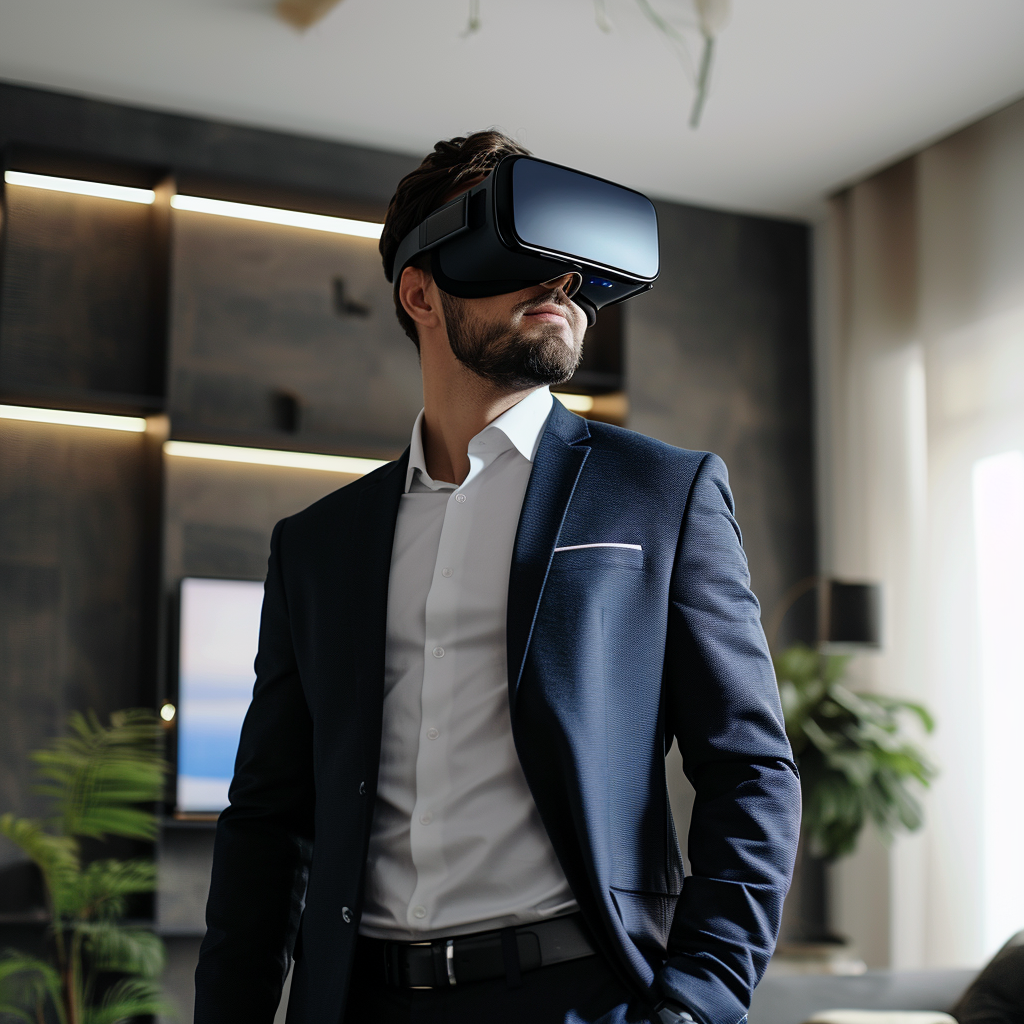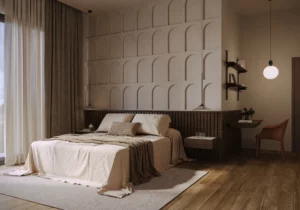Virtual Reality revolutionizes the real estate market in Spain
The use of Virtual Reality is transforming the real estate market. It allows clients to explore and interact with properties virtually, providing comfort and showing a realistic image of buildings under development. In addition, simulations can be performed in real time, saving time and money. Virtual reality goggles such as Oculus Quest 2 and Vogmogo offer a high-quality immersive experience. Although it presents challenges, adoption of this technology is becoming more common in the real estate industry. Without a doubt, virtual reality is impacting the home buying process.
Benefits of Virtual Reality in the Real Estate Sector
Virtual reality in real estate offers a number of benefits that have revolutionized the way properties are presented to clients. These benefits include:
Customer convenience
Through virtual reality, customers can explore and view properties without having to physically travel. This provides them with convenience and saves them time and effort when searching for homes.
Virtual reality in the construction phase
One of the most prominent advantages of real estate virtual reality is the ability to show a realistic image of a building under construction. This allows clients to get a better understanding of how the space will look and be laid out when the project is completed.
Real-time simulations
Virtual reality also offers the ability to perform real-time simulations, allowing customers to visualize different scenarios and customize elements such as space layout, finishes and furniture. This gives them greater involvement in the design and decision-making process.
Saving time and money
The use of virtual reality in real estate sales allows clients to reduce travel and physical visits to multiple properties. This translates into significant savings in time and money for both clients and real estate agents.
Differentiation from the competition
The adoption of virtual reality in real estate provides companies with a competitive advantage by offering an innovative and engaging experience to customers. Those companies that use this technology stand out from the competition and capture the attention of potential buyers.
Positive publicity
The use of virtual reality in real estate advertising generates greater exposure and positive publicity for companies. This technology appeals to a wider audience and allows properties to be shown in an impactful and attractive way.
Real Estate Virtual Reality Glasses
Virtual reality goggles are devices that allow users to immerse themselves in a virtual environment and explore real estate in a completely immersive way. These goggles work by displaying computer-generated images through special lenses, providing a realistic visual experience.
Operation of virtual reality glasses
The virtual reality glasses work by capturing the user's head movements and displaying three-dimensional images in real time. Thanks to sensors and motion tracking, the user can feel as if they are walking around the property, looking up, down and around. This creates a sense of virtual presence that allows for a unique immersive experience.
Models: Oculus Quest 2, Vogmogo, and others
There are several models of real estate virtual reality goggles on the market. One of the most popular is the Oculus Quest 2, which offers a wide range of features, such as a high-resolution display, controller-free hand tracking and a large library of games and applications. Another prominent model is Vogmogo, known for its ergonomic comfort and image quality. In addition, there are other options on the market that also offer an immersive, high-quality experience.
Immersive and high quality experience
Real estate virtual reality goggles provide an immersive and high quality experience for clients. By using these glasses, users can virtually explore a property, visualize every corner, evaluate its layout, dimensions and architectural details. The sharpness of the images and the sense of realism give clients a more accurate perception of the property, allowing them to make informed decisions and reducing the need for physical visits to multiple properties.
Virtual Reality Real Estate Property Sales
Selling properties with virtual reality is a growing trend in the real estate industry. To provide customers with a realistic experience, it is necessary to have the right equipment.
Equipment required for a realistic experience
To offer an immersive and quality experience, it is required to have:
- Virtual reality tools: the latest generation of VR glasses, such as Oculus Quest 2 or the new Apple Vision Pro, which allow the client to visualize the property virtually.
- Software and applications: specific programs are used to create interactive virtual tours that show the characteristics of the property, such as its layout, size and finishes.
- Specialized cameras: 360-degree cameras are used to capture images and videos that will be used in the virtual tours.
Customer immersion when visiting a property
Through virtual reality, customers can immerse themselves in a virtual tour of a property, exploring every environment and detail with precision. This allows them to have an experience similar to a real visit, without the need to physically travel.
Customer immersion is achieved through:
- Interactive virtual tours: the client can virtually move around the property, exploring different areas and perspectives.
- Visualization of details: virtual reality allows the client to zoom in and examine specific details, such as the quality of the finishes or the layout of the spaces.
- Realistic simulations: simulations can be made of how the property would look with different configurations, such as changes in furniture or decoration.
Selling properties with virtual reality offers a unique experience to clients, allowing them to make informed decisions and reduce the number of physical visits to properties. This technology has become an essential tool in the real estate sector, providing advantages for both buyers and sellers.
Challenges and Limitations of Virtual Reality in the Real Estate Sector
The incorporation of Virtual Reality in the real estate sector is not without challenges and limitations. Although this technology offers numerous benefits, it is important to take into account certain aspects for its correct application and use in this field.
Properties suitable for virtual reality
Not all properties are equally suitable to be presented through Virtual Reality. It is necessary to carefully evaluate what type of properties are best suited to this technology, considering their design, size and structure. Very small or unconventionally designed properties may not offer a satisfactory immersive experience.
Balance between ease and attention to detail
While Virtual Reality allows properties to be displayed virtually, it is essential to find a balance between ease of navigation and attention to detail. On the one hand, virtual exploration of the property must be facilitated to provide a seamless experience for the user. On the other hand, it is important to pay attention to architectural details, materials and finishes to ensure an accurate and realistic representation of the property.
Adoption of Virtual Reality in the Real Estate Sector
The adoption of virtual reality in the real estate sector is experiencing significant growth. More and more companies in the sector are implementing this technology as a key tool in their sales strategy. What factors are driving this generalization in the real estate market? Here are some arguments in favor of the adoption of virtual reality in the real estate sector:
Generalization of virtual reality in the real estate market
Virtual reality has become a must-have in the real estate industry. More and more clients expect to have access to immersive virtual tours prior to making a physical visit to a property. This demand has led to virtual reality becoming more widespread in the market, as it has been proven to significantly improve the customer experience and speed up the sales process.
Arguments in favor of adopting the technology
- Enhanced visualization: Virtual reality gives clients the ability to explore and visualize a property in a realistic and detailed way, even before it is built. This gives them a clear idea of what the space will look like and helps them make informed decisions.
- Immersive experience: Virtual tours offer an immersive and exciting experience. Customers can move around the property, interact with virtual elements and experience a realistic feel of the space. This allows them to have a deeper connection with the property and increases their level of engagement.
- Cost reduction: Virtual reality reduces costs associated with physical visits to properties. Clients can take virtual tours from the comfort of their homes, eliminating the need for travel and optimizing real estate agents' time.
- Differentiation in the market: The adoption of virtual reality allows real estate companies to differentiate themselves from the competition. Those that offer immersive virtual tours have a competitive advantage, as they provide a unique experience and stand out in the minds of customers.
- Attracting international clients: Virtual reality facilitates the sale of properties to international buyers. Through virtual tours, clients can explore properties without the need to travel, which broadens the scope of the offer and attracts a more diverse audience.
- Effective marketing and advertising: Virtual reality generates more positive publicity for real estate companies. The use of this technology creates an impact and lasting impression on customers, resulting in increased visibility and brand recognition.
Impact of Virtual Reality on the Home Buying Process
Virtual Reality has had a profound impact on the home buying process, introducing significant changes in the way customers conduct this transaction. Through the implementation of this technology, improvements have been made in both the efficiency and effectiveness of the process, providing buyers with a more immersive and complete experience.
Changes in the real estate purchasing process
One of the most notable changes is the ability to conduct virtual tours of properties. Buyers are no longer limited by distance or the physical availability of properties, as they can explore them from the comfort of their own home. This has greatly expanded the options available to clients, allowing them to view a variety of properties without having to travel.
In addition, virtual reality has accelerated the decision-making process. By being able to conduct detailed and realistic virtual tours, buyers can more quickly and accurately assess whether a property matches their needs and preferences. This saves time for both buyers and real estate agents, streamlining the selection process and reducing the time spent on face-to-face visits.
Effectiveness of virtual reality as a sales tool
Virtual reality has proven to be a highly effective tool for home sales. By offering more immersive and detailed experiences, buyers can get a more accurate view of properties, increasing confidence in their choice. This translates into a higher conversion rate from virtual tours to actual sales.
In addition, virtual reality allows developers to showcase properties that are still under construction. Customers can look at floor plans and digitally walk through spaces not yet built, helping them to more accurately visualize the end result and make informed decisions about purchasing a property under construction.
If you still do not know the difference between virtual reality and augmented reality you can access the link above.





